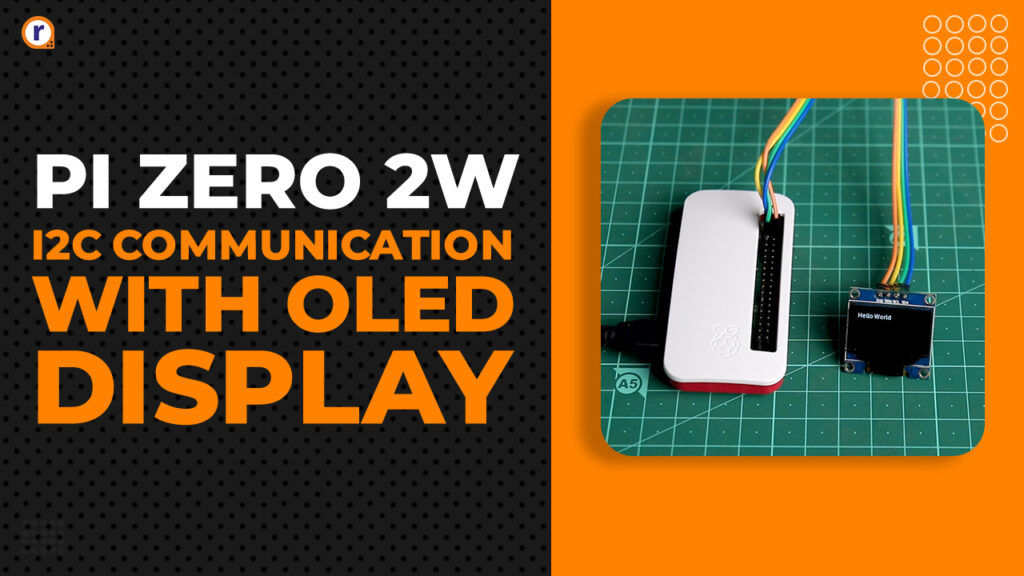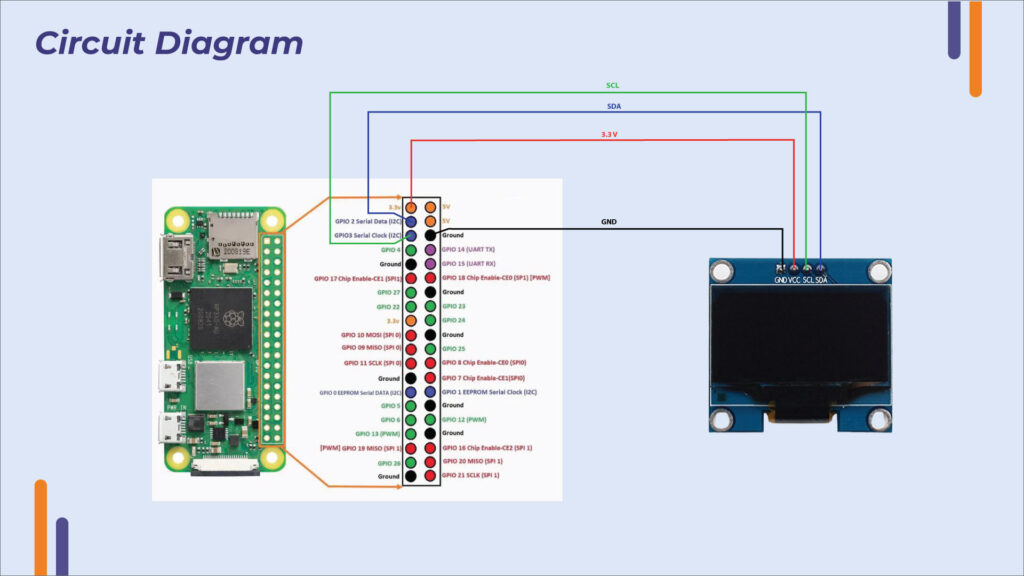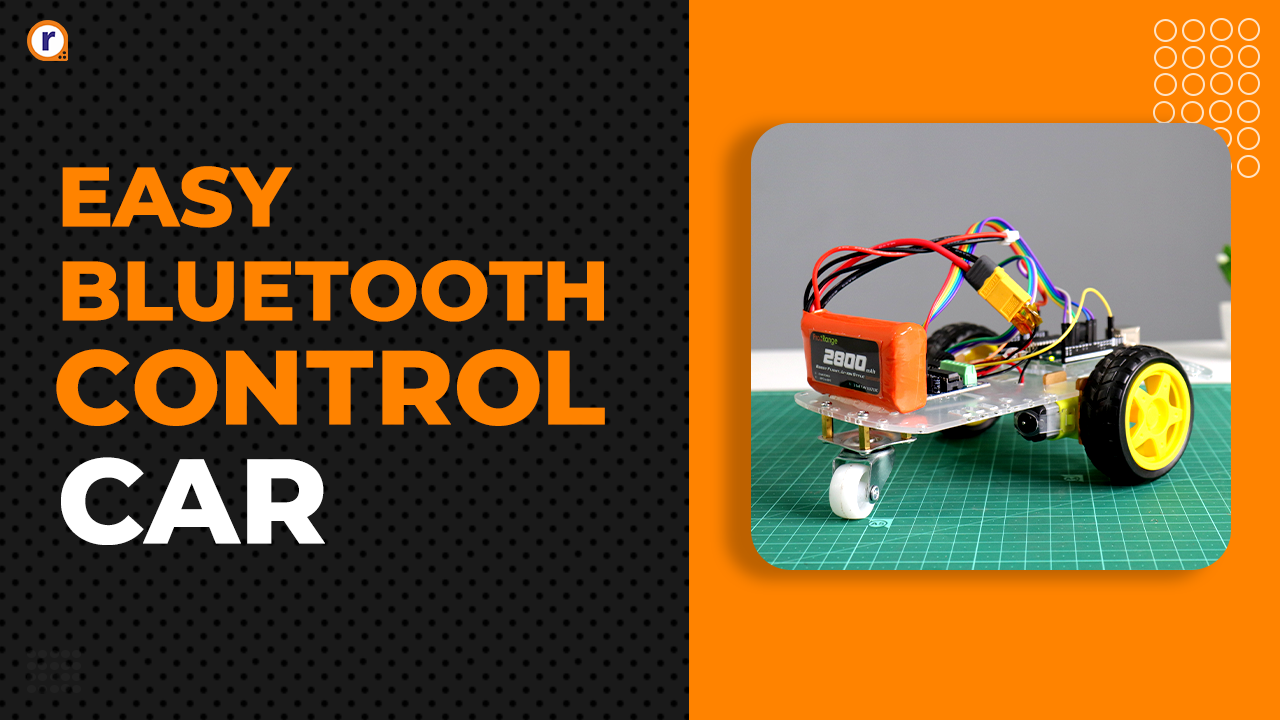Raspberry Pi Zero 2W : How to enable I2C and OLED display example
In this guide, we’ll see how to enable I2C on Raspberry Pi Zero 2W, and attach a SSD 1306 OLED display and display few things on it. So, let’s get

In this guide, we'll see how to enable I2C on Raspberry Pi Zero 2W, and attach a SSD 1306 OLED display and display few things on it.
So, let's get started
What is Raspberry Pi ?
It's a small, affordable, single-board computer developed by the Raspberry Pi Foundation. Designed initially for educational purposes, it provides a platform for learning programming, computer science, and even in few industries. Over time, it has gained popularity among hobbyists and professionals for its versatility in various projects, such as home automation, media centers, robotics, and more.
The Raspberry Pi runs a variety of operating systems, most notably Raspberry Pi OS (formerly Raspbian), which is based on Debian Linux. It supports programming languages like Python, C, C++, Java, and others, making it an ideal tool for both beginners and advanced users.
The device features USB ports, HDMI output, GPIO pins for hardware projects, and network connectivity, making it a powerful and flexible tool for numerous applications.
Pi Zero 2W
The Raspberry Pi Zero 2W is a compact and cost-effective variant of the Raspberry Pi series, designed to offer significant performance improvements over its predecessor, the Raspberry Pi Zero W.
Released by the Raspberry Pi Foundation, the Pi Zero 2W retains the small form factor of the original Pi Zero models but its new features and enhanced specifications, making it more capable for various projects.
Features
- A quad-core 64-bit ARM Cortex-A53 CPU, which provides a significant performance boost compared to the single-core CPU of the original Pi Zero.
- 512MB of LPDDR2 SDRAM, sufficient for lightweight computing tasks and various IoT applications.
- Integrated 2.4GHz IEEE 802.11b/g/n wireless LAN and Bluetooth 4.2, offering robust wireless communication capabilities.
- CSI-2 camera connector, allowing the attachment of Raspberry Pi camera modules.
- Mini HDMI port for video output.
The Raspberry Pi Zero 2W is designed to be a low-cost, low-power solution suitable for projects that require a small form factor and modest computing power. Its improved performance and connectivity make it ideal for embedded applications, DIY electronics, portable projects, and educational purposes.
Hardware Requirements of this Project
Software Requirements of this Project
- Python Packages and few other dependencies
Circuit Diagram and Hardware Interfacing
Circuit Diagram

Hardware Interfacing
Raspberry Pi Zero 2W
|
Raspberry Pi Zero 2W |
SSD 1306 OLED |
|
+3.3V |
VCC |
|
GND |
GND |
|
GPIO 2 (SDA) |
SDA |
| GPIO 3 (SCL) |
SCL |
Prerequisites
Before we diving right into coding, we need to do few things first. To get all the libraries and dependencies sorted. And also we need to enable I2C if it isn't on in the first place.
To turn on the I2C, firstly we need to head into configuration menu by -
sudo raspi-config
And head into the interface options -> select I2C and enable it from there.
optional - we could increase the I2C bus speed from default 100000 to 400000 to make animations or video playback much smoother.
To do that we need to edit the config file, and add extra parameter to it.
Firstly head into config file by -
sudo nano /boot/firmware/config.txt
and goto line where it says - dtparam=12c_arm=on and change that line to
dtparam=i2c_arm=on, i2c_arm_baudrate=400000
and save and exit the config file by ctrl+s and ctrl+x respectively.
To check if your I2C is present or not, this the command -
ls -l /dev/i2c*
And you should see two I2C controllers present which are 1 and 2 respectively.
Next we need to install few libraries, few of which could be there already. But just to make sure, run all the commands once -
sudo apt install -y python3-dev
sudo apt install -y python3-smbus i2c-tools
sudo apt install -y python3-pil
sudo apt install -y python3-setuptools
sudo apt install -y python3-venv
Now, connect the OLED display as per the circuit diagram, and run the following command to see if your Raspberry Pi can see the display or not -
i2cdetect -y 1

You can cross verify it by looking at the back of the OLED display and see a resistor shorting 0x3C (0x78).
If your resistor is shorting 0x7A then the address reported should be 0x3D.
Now that we have setup all the necessary things by which we'll be able to communicate to the I2C display. Now lets move onto necessary libraries through which we can get something printed onto the display.
Lets make a project folder and move into it using the respective commands-
mkdir oled_display
cd oled_display
We'll be creating a virtual environment for this entire thing inside this folder. Why? It is a good practice to to contain all the libraries and dependencies inside a folder, protecting the core python installation of the Pi. And in case something goes wrong, all we need to do is to simply delete the folder and make it again.
To create a virtual environment, we'll be using -
python3 -m venv [folder name you want to give without the brackets]
and to start the virtual environment, use the command -
source [folder name you gave without the brackets]/bin/activate
Now you'll be in a safe environment, to do experiments without the worry of bricking the Raspberry Pi or the python installation in it.
To control or communicate with OLED, we need luma.oled library. Get it by running the command -
python -m pip install --upgrade luma.oled
After that we need git, to copy the examples from a github repo. Get git by using this -
sudo apt install git -y
and followed by the cloning of the library to local from github by -
git clone https://github.com/rm-hull/luma.examples.git
Now the dependencies which we defiantly need to run some of the examples without any errors -
sudo apt install -y python3-pil libjpeg-dev zlib1g-dev python3-av
sudo apt install -y libfreetype6-dev liblcms2-dev libopenjp2-7 -y
After done installing these, you can make your own python program or head into luma.examples/examples to try out pre-written programs on the OLED display by using command -
cd luma.examples/examples and then
python [the file name you want to try].py
And for any reason if virtual environment gets corrupted beyond repair, you can always delete the folder using -
rm -rf ~/oled_display/venv
Coding
Copy the following code after opening up the text editor, by command
sudo nano disp.py and save and exit the text editor by ctrl+s and ctrl+x.
from luma.core.interface.serial import i2c
from luma.core.render import canvas
from luma.oled.device import ssd1306
from PIL import ImageFont
import time
def main():
# Create I2C interface
serial = i2c(port=1, address=0x3C)
# Create device
device = ssd1306(serial)
# Use a truetype font or the default one if not available
try:
font = ImageFont.truetype("arial.ttf", 16)
except IOError:
font = ImageFont.load_default()
# Draw "Hello World" on the OLED display
while True:
with canvas(device) as draw:
draw.text((10, 10), "Hello World", font=font, fill=255)
time.sleep(1)
if __name__ == "__main__":
main()
After saving the code you can run it by using command -
python disp.py
Conclusion
Hence, after all this setting up and example. You'll have basic knowledge on how to setup and work with OLED display in Raspberry PI Zero 2W. If there is any problem or error's arising, feel free to refer the video which is present on youtube practically walking you through the process step by step.
- For more such Arduino and Raspberry Pi based projects,
check out our Arduino Playlist and Raspberry Pi Playlist
- And for other more interesting projects, check our main YouTube Channel





